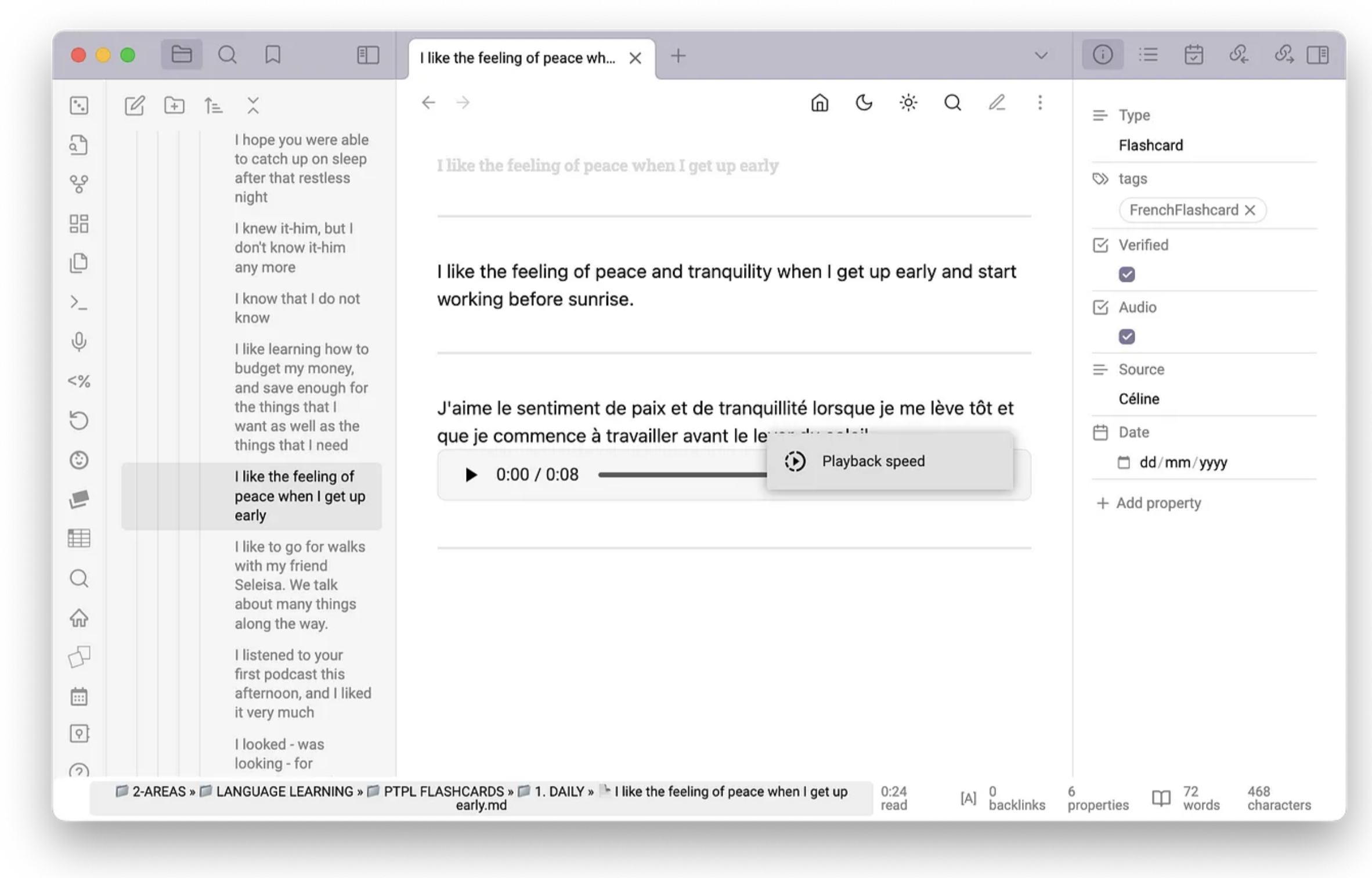My method for making Markdown flashcards with simple spaced repetition on a Mac might not gamify your learning, but it’s portable and it works. Also, a tool for downloading Substack posts to Markdown files.
I honestly have no clue how to use this kind of geekery, but if you do and you have need of such a tool, I hope it’s useful.
GitHub — ddanielgal/subsidian: Substack to Obsidian Downloader

Background: My flashcards are a series of Markdown files, one per card, that live in my Obsidian vault. I was using the excellent Spaced Repetition plugin to revise them, but something wasn’t feeling quite right. Perhaps it was the feeling that I was always behind schedule? I’m not sure.
This week I ran a wildly successful experiment with a new way of handling the flashcards I use for language learning. As a result, I’ve stopped using flashcard apps and plugins altogether, because I’ve created my own. Based on the Leitner system, it’s simple and it’s raw but it works, and I’m delighted with it!
Obsidian is recommended, but all you’d need for basic functionality is a basic Markdown editor and the Finder.
This method is for people who —
It’s not for people who don’t care who’s guarding their data, who want an out-of-the-box solution, or for those who want detailed stats on their progress.
The method in outline form will be available for free so that people familiar with the tools (or willing to engage in self-directed learning) can put it together on their own. There may also be a paid step-by-step version, eventually.
Here it is in brief:
Create one file per flashcard, with the name of the file being the first line of the card. Use Obsidian Properties to define tags, verification status, and whether or not the card has audio (or other attachments). Set up folders based on when you want to review your cards (daily, weekly, monthly, etc), and use tags plus the Auto Note Mover plugin to move cards from one folder to another.
To test yourself, look at the file name and attempt to provide the target information. Open the file to check your answer, then move the file either up or down the folder hierarchy depending on how you did.
It might look clunky from that description, but don’t be fooled. This is an elegant, local-first, app-independent adaptation of the simple old-fashioned card-based spaced repetition system, that works very well in practice. It puts you in control of your learning and all the hard work you’ve put into compiling your cards.
Words on the page can’t convey how utterly excited I am about this! I’m also planning a similarly structured resource on plain text task management.
💬 Comment on Mastodon · or by email
Follow my RSS feed, or sign up to receive posts in your inbox
 Your Scratchpad is a Wealth of Hidden Gems—Go Find Them!
Your Scratchpad is a Wealth of Hidden Gems—Go Find Them!
 What's in My Bag — Bellroy Mobile Office And EDC
What's in My Bag — Bellroy Mobile Office And EDC